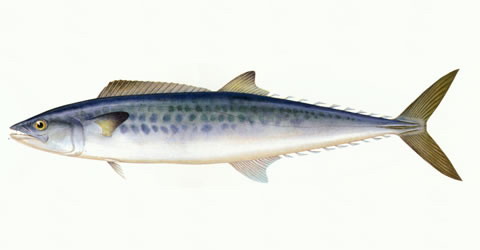| Scombridae (Mackerels, tunas, bonitos), subfamily: Scombrinae |
| 113.2 cm TL (male/unsexed); max.weight: 8,010.0 g |
|
pelagic-neritic; marine; depth range 0 - 200 m, oceanodromous |
| Northwest Pacific: confined to the subtropical and temperate waters of China, the Yellow Sea and Sea of Japan north to Vladivostok, former USSR. Often confused with Scomberomorus munroi. |
|
Dorsal spines (total): 19-21; Dorsal soft rays (total): 15-19; Anal soft rays: 16-20; Vertebrae: 48-50. Interpelvic process small and bifid. Lateral line gradually curving down toward caudal peduncle. The only species in the genus with a straight intestine. Swim bladder absent. Body covered with small scales. Anterior quarter of first dorsal fin and a narrow distal margin of the rest of the dorsal fin black. Sides with seven or more rows of longitudinal spots on the sides; some spots connected together. |
| Found near shore (including semi-enclosed sea areas) (Ref. 11230). Undergoes a spawning migration in spring (March to June) and a feeding migration in fall (September to November) in the Inland Sea of Japan. Feeds on small fishes. Another major fishing gear that is used are set nets. This species is the most important Scomberomorus species in Japan which is cultured and released for fishery. Marketed fresh and especially tasty in winter. Eaten pan-fried, broiled and baked (Ref. 9988). |
|
Near Threatened (NT); Date assessed: 19 October 2022 (A2bd) Ref. (130435)
|
| harmless |
Source and more info: www.fishbase.org. For personal, classroom, and other internal use only. Not for publication.
